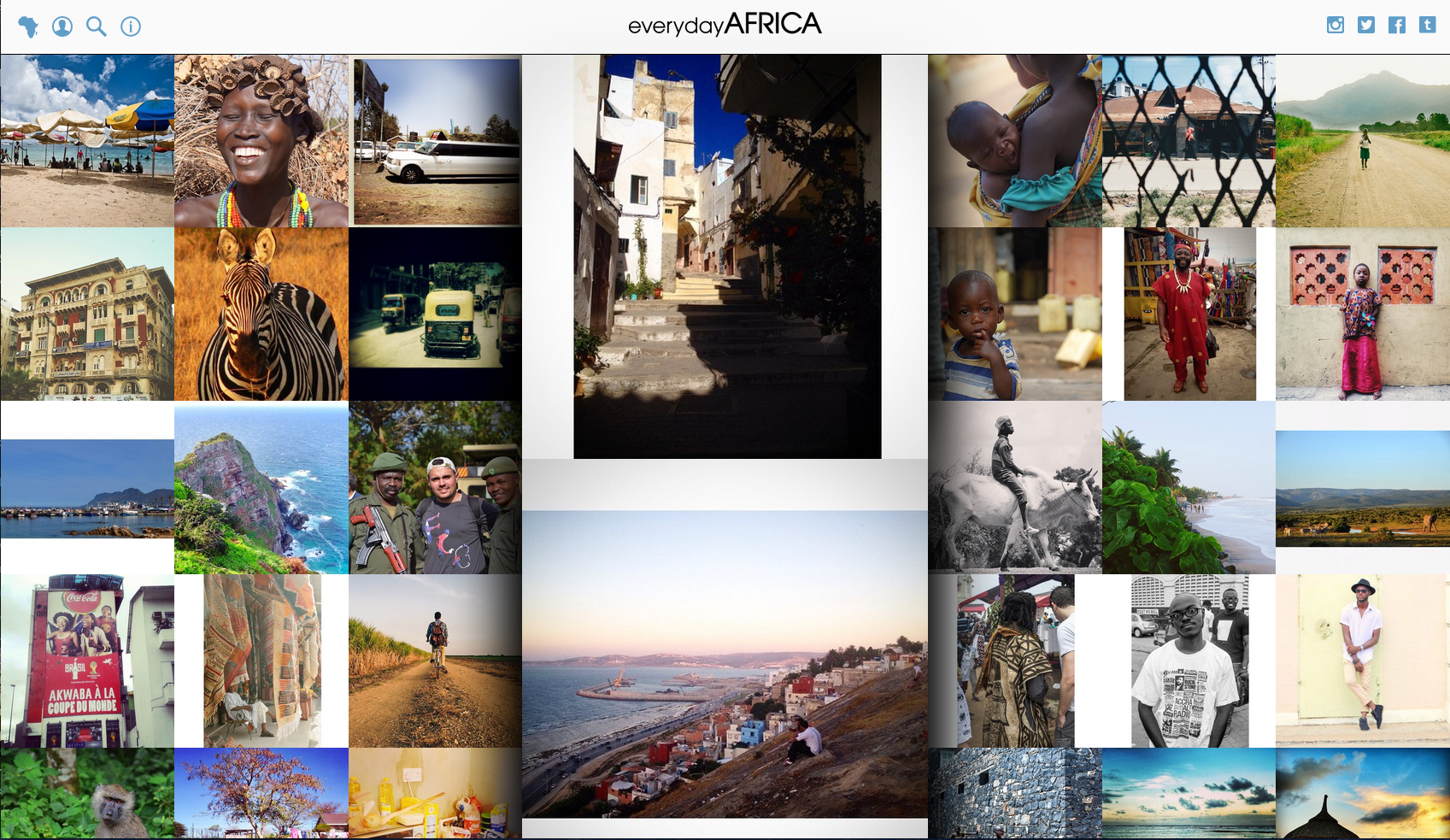When I first started speaking with Austin Merrill and Peter DiCampo of the Everyday Africa team, I was immediately excited about the project. The concept was so simple at the core: work with photographers already on the ground to curate images of everyday life in Africa that help alter people’s perceptions of the continent. In just a year, the Instagram feed had more than 40,000 followers and was rising fast.
They came to me at Uncharted Digital to help construct a platform for showcasing the project, while making it useful in an academic setting. We knew that we wanted to build the project in a way that community members could contribute easily, while allowing the content to be searched and filtered in ways that could augment a lesson plan being developed in conjunction with the site.
My previous work with The Tiziano Project, which teaches new media journalism in conflict, post-conflict and under-represented regions, gave me the perfect background for this project. In 2011, The Tiziano Project actually received a Knight News Challenge grant to build StoriesFrom, a platform for building community-generated, interactive documentaries that were very much in line with Everyday Africa. Ultimately though, StoriesFrom achieved limited success for myriad reasons. The biggest issues were that it was difficult to create projects and we never brought users back out to places where they were already engaged in order to keep expanding the community.
We tried to take these lessons to heart and apply them to the Everyday Africa build. Here are just a few things that we have focused on:
1) Make it easy not just for end users, but also for administrators
We knew going into this that we wanted the site to be super simple and as automated as possible. Currently, a single config file allows admins to control what users and hashtags are displayed as part of the site. In the future, we hope to make this something that can be easily deployed by other projects and modified quickly to showcase content. The important thing to consider here is that making something awesome for the end user is really important, but if it’s not easy to install and maintain, the tool itself won't have the reach or longevity of an easier-to-use system.
2) Make it easy for the end users
But you still can’t forget about the end user. With Everyday Africa, the project’s entire base is Instagram, so we knew that this site had to work just as well on the desktop as on a smartphone. The site is entirely responsive with multiple break points for different devices. And we wanted to be sure to remember that some of our most important end users are people in classrooms: teachers and students. The site had to be easy and fun, but it also had to emerge as a useful tool, both as an accompanying element to a teacher’s curriculum, and as a central piece of a lesson plan.
3) Leverage existing communities
With the end user, the goal for this site was never to create a new community, but instead to showcase the work as a collection that would prove useful not only for the “everyday” user, but for educators as well. When conceiving the platform, we focused on leveraging Instagram and Tumblr as much as possible to maintain the community action within those systems. The entire site is actually built on top of Tumblr with the center column of images the Everyday Africa feed itself. On any of those images, you can directly Reblog the image or Follow @everydayafrica on Instagram.
These are just a few quick takeaways and the site is still very much a work in progress, with plans to expand and make it easier to use in the future. If you would like information about partnering with Everyday Africa, please email: [email protected]
Check out the new Everyday Africa website here: http://everydayafrica.tumblr.com/
The Everyday Africa website was made possible thanks to the support of the Pulitzer Center on Crisis Reporting and the Open Society Foundations.
